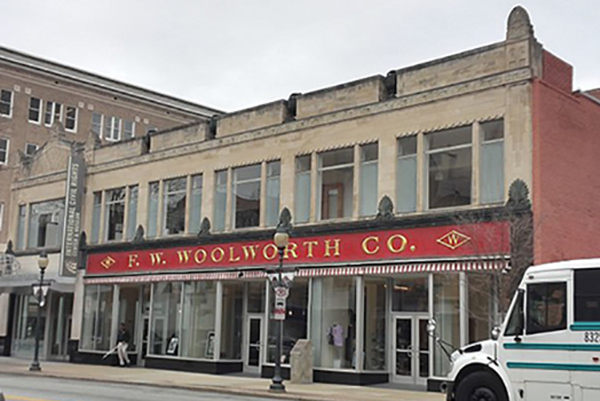Greensboro’s International Civil Rights Center & Museum is planning something special in conjunction with its annual fund-raising telethon this year on Friday, Feb. 1– a reunion of the people who participated in the Sit-In protests from February 1 to July 25, 1960.
The museum, which opened in 2010, commemorates the launch of the Sit-In protest at the whites-only lunch counter in the F.W. Woolworth’s store at 134 S. Elm St. in downtown Greensboro. On that day, four NC A&T State University students sat down at the lunch counter and refused to move until they were served. That non-violent protest to challenge the policy sparked similar protests across the country. Those four A&T freshmen Joseph McNeil, Jibreel Khazan (Ezell Blair Jr.), David Richmond, and Franklin McCain – are the ones best remembered by history and only two of the four are left with us today. Richmond died in 1990 and McCain in 2014.
But in the months following Feb. 1, 1960 many other people came out and took seats in protest as well.
This year the museum wants to find as many of those participants as it can in order to have them take part in the activities on the day of the telethon. Those protesters from 1960 will take incoming telethon calls and speak with visitors about their experiences during that turbulent six-month period 59 years ago.
On the first day of Black History Month, from 6 a.m. to 6 p.m., the annual telethon will run on WFMY- TV. The station will continue to air regular programming but will cut to the museum and the phone bank during commercial breaks to promote the museum and help raise money. All day long, televised reports will be broadcast live from the building’s lobby.
Guilford County Commissioner Skip Alston, a founder of the museum, said he’s extremely excited about the event.
“Sandra Hughes will be there on site,” he said of the popular News 2 anchor and reporter.
Alston said a great many people – black and white, male and female – came out during those six months in 1960 to take seats at the counter as part of the protest.
He said, for instance, a group of white women from the University of NC at Greensboro – at the time called the Woman’s College – sat at the counter to show support for the movement and, when they were heckled and threatened for doing so, the A&T football team came down to protect them.
“A lot of people sat down to protest,” Alston said of the Sit-Ins during that period. “It was hundreds of people or thousands of people – both black and white.”
While the telethon is taking place on Feb. 1 those who participated in the protests will be featured in interviews and will be on hand for discussions with the public.
John Swaine, CEO of the museum, said he hopes the event can be used “to educate the public about the meaning of non-violent direct-action protest and the effectiveness of perseverance.”
He said that, over the last nine years since the museum opened, he’d heard many stories from people who took part in the Sit-In and this will be a great chance to get a lot of those stories on the record.
“There will be student journalist here taking the first-hand accounts,” he said.
He also said that some people don’t realize that a large number of students from Dudley High School played a role in the city’s Sit-In movement.
Swaine said the museum stands for “thoughtful remembrance and hopeful anticipation,” and he added that there’s a lot of work left to be done to further the discussion of race in America.
“We are continuing to work diligently to change the dialogue among the conscientious people of this country,” he said.
The museum’s corporate parent, Sit-In Movement, Inc. was founded in 1993 as a non-profit organization meant to acquire and preserve the Woolworth building and establish the museum.
One stated goal of the museum is “to serve as a hub for the advancement of understanding about civil rights — and as a monument to the bravery and initiative of visionary young advocates of equal citizenship and social justice.”

